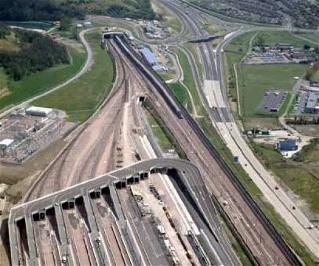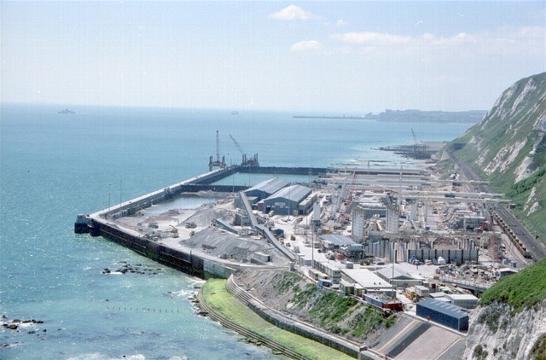Channel Tunnel
The Channel Tunnel is a 50.5-kilometre (31.4 mi) undersea rail tunnel linking the UK with France. At its lowest point, it is 75 metres (250 ft) deep. At 37.9 kilometres (23.5 mi), the Channel Tunnel possesses the longest undersea portion of any tunnel in the world.
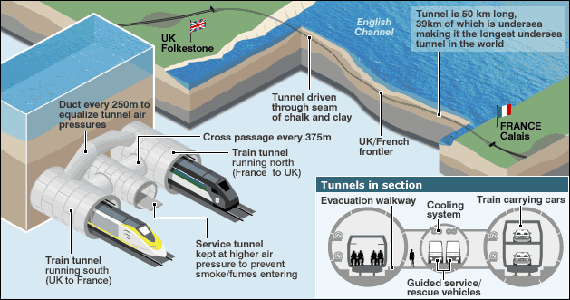
Working from both the English side and the French side of the Channel, eleven tunnel boring machines cut through chalk marl to construct two rail tunnels and a service tunnel.
Tunnelling commenced in 1988, and the tunnel began operating in 1994. In 1985 prices, the total construction cost was £4.650 billion (equivalent to £11 billion today). At the peak of construction 15,000 people were employed with daily expenditure over £3 million.
A small, two-inch (50-mm) diameter pilot hole allowed the service tunnel to break through without ceremony on 30 October 1990. Eurotunnel completed the tunnel on time.
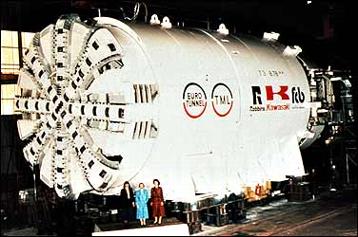
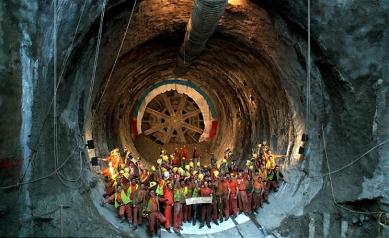
The Channel Tunnel Rail Link (CTRL), now called High Speed 1, runs 69 miles (111 km) from St Pancras railway station in London to the Channel Tunnel portal at Folkestone in Kent.
Surveying undertaken in the twenty years before tunnel construction confirmed earlier speculations that a tunnel route could be bored through a chalk marl stratum. The chalk marl was conducive to tunnelling, with impermeability, ease of excavation and strength. While on the English side the chalk marl ran along the entire length of the tunnel, on the French side a length of 5 kilometres (3 mi) had variable and difficult geology.
The Channel Tunnel consists of three bores: two 7.6-metre (25 ft) diameter rail tunnels, 30 metres (98 ft) apart, 50 kilometres (31 mi) in length with a 4.8-metre (16 ft) diameter service tunnel in between. There are also cross-passages and piston relief ducts. The service tunnel was used as a pilot tunnel, boring ahead of the main tunnels to determine the conditions. The French side used five tunnel boring machines (TBMs), the English side used six. The service tunnel uses Service Tunnel Transport System (STTS) and Light Service Tunnel Vehicles (LADOGS). Fire safety was a critical design issue.
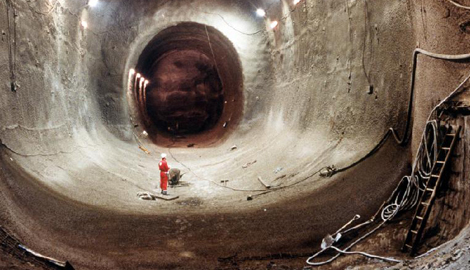
Between the portals at Beussingue and Castle Hill the tunnel is 50.5 kilometres (31 mi) long, with 3.3 kilometres (2 mi) under land on the French side, 9.3 kilometres (6 mi) under land on the UK side and 37.9 kilometres (24 mi) under sea. This makes the Channel Tunnel the second longest rail tunnel in the world, behind the Seikan Tunnel in Japan, but with the longest under-sea section. The average depth is 45 metres (148 ft) below the seabed.
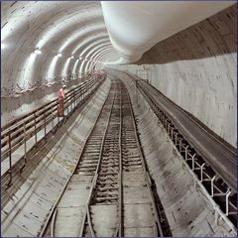
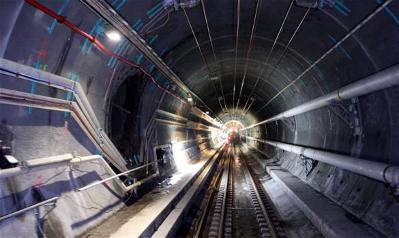
On the UK side, of the expected 5 million cubic metres of spoil approximately 1 million cubic metres was used for fill at the terminal site, and the remainder was deposited at Lower Shakespeare Cliff behind a seawall, reclaiming 74 acres of land.
In 1996, the American Society of Civil Engineers, with Popular Mechanics, selected the tunnel as one of the Seven Wonders of the Modern World.
